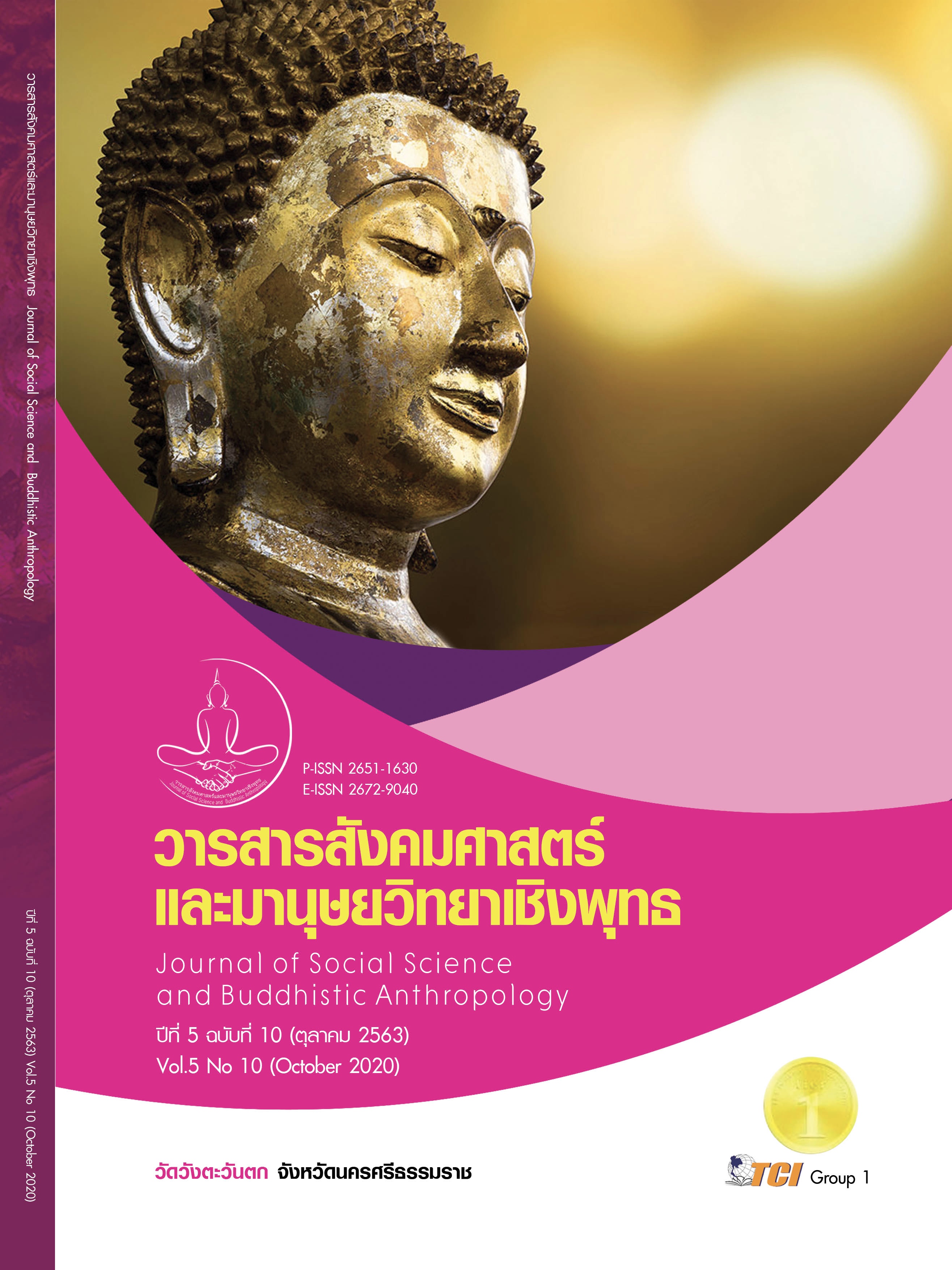THE MODEL OF ELECTRONIC SYSTEM MANAGEMENT OF MAHACHULALONGKORNRAJAVIDYALAYA UNIVERSITY
Keywords:
The Model of Management, Electronic system, UniversityAbstract
This research aims to 1) to study the management status of the electronic system of Mahachulalongkornrajavidyalaya University, 2) to analyze the factors influencing on management of Mahachulalongkornrajavidyalaya University and 3) to create a model of electronic system management of Mahachulalongkornrajavidyalaya University. This research was a blended research by conducting qualitative and qualitative research using research tools, administrators and research samples, the executive, staff and university level of 750 person. The research results showed that most respondents were monks with 18-30 years of age and they were students. Most of the university's media were received via Facebook. In which the opinions are at a high level in all aspects, consisting of the capability of the system, followed by the cooperation of the users Stakeholder partnership factors and electronic system management respectively. Relationship measurement was positive and rated at a high level with the same direction and there was a multiple correlation having relation with influencing on electronic system management. The confirmatory factor analysis of the structural equation modeling was = 128.219, df = 69, P-value = 0.071, CFI = 0.982, TLI = 0.973, SRMR = 0.043, RMSEA = 0.013,
/df = 1.858, <2. The system capability factors directly affected the partner factors of stakeholders, the cooperation factors of the system users directly affected the partner factors of stakeholders, the system capability factors indirectly affected electronic system management through the partner factors of stakeholders, the cooperation factors of the system users indirectly affected electronic system management through the cooperation factors of the system users. The model of electronic system management, in overall, was suitable at the highest level. It was suitable on utility, appropriateness, accuracy and possibility respectively.
References
จารุณี ภัทรวงษ์ธนา และคณะ. (2560). การพัฒนาระบบสารสนเทศเพื่อการจัดการ สำหรับการจัดทำแผนพัฒนาชุมชนในพื้นที่ชุมชนกึ่งเมืองตำบลสารภี อำเภอสารภี จังหวัดเชียงใหม่ เพื่อรองรับการบริหารจัดการชุมชนแบบมีส่วนร่วมสู่การพัฒนาอย่างยั่งยืน. วารสารวิชาการมหาวิทยาลัยฟาร์อิสเทอร์น, 11 (4), 128 - 146.
ธัญวรัตน์ กระจ่าง. (2557). ปัจจัยที่เกี่ยวข้องกับการใช้งานระบบสารบรรณอิเล็กทรอนิกส์อย่างมีประสิทธิภาพของบุคลากรคณะวิทยาศาสตร์การแพทย์ มหาวิทยาลัยนเรศวร. วารสารมนุษยศาสตร์และสังคมศาสตร์ มหาวิทยาลัยพะเยา, 2 (2), 37 - 45.
ภาวิช ทองโรจน์. (2560). สภาสถาบันอุดมศึกษากับการพัฒนาอุดมศึกษา. เรียกใช้เมื่อ 10 ตุลาคม 2561 จาก http://www.mua.go.th/users/bhes/catalog_h/StdEdu/FormCurr/PavitSpeak.pdf
เรวัต แสงสุริยงค์. (2559). บนเส้นทางการพัฒนาในสังคมไทย: ยุคก่อนการปฏิรูประบบราชการ. วารสารวิชาการมนุษยศาสตร์และสังคมศาสตร์, 24 (46), 35 - 57.
ศิริ พันท์ทา. (2562). การสร้างความพึงพอใจต่อการให้บริการในยุคของการเปลี่ยนแปลงทางสังคมปัจจุบัน. Journal of Modern Learning Development, 4(2), 32 - 47.
สุทธิพงษ์ อุพลเถียร และคณะ. (2560). การประเมินประสิทธิภาพระบบสารสนเทศเพื่อการบริหารของวิยาลัยการสาธารณสุขสิรินธร จังหวัดขอนแก่น. วารสารสถาบันวิจัยพิมลธรรม, 4 (1), 73 - 84.
อุษา ส่งศรี และคณะ. (2560). การรับรู้และพฤติกรรมการใช้เทคโนโลยีสารสนเทศของบุคลากรสายสนับสนุนมหาวิทยาลัยทักษิณ. วารสารศึกษาศาสตร์ มหาวิทยาลัยทักษิณ, 17(2), 73 - 84.
Bruce Rocheleau. (2006). Public Management Information Systems. USA: Integrated Book Technology.
Cronbach, L. J. (1990). Essentials of psychological testing. New York: Harper Collins Publishers.
Stufflebean, D. L. (2005). CIPP model (Contexy, Input, Process, Product). CA: Sage.








